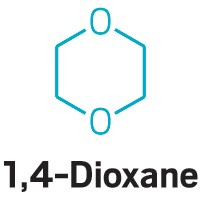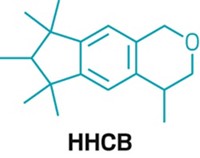Advertisement
Grab your lab coat. Let's get started
Welcome!
Welcome!
Create an account below to get 6 C&EN articles per month, receive newsletters and more - all free.
It seems this is your first time logging in online. Please enter the following information to continue.
As an ACS member you automatically get access to this site. All we need is few more details to create your reading experience.
Not you? Sign in with a different account.
Not you? Sign in with a different account.
ERROR 1
ERROR 1
ERROR 2
ERROR 2
ERROR 2
ERROR 2
ERROR 2
Password and Confirm password must match.
If you have an ACS member number, please enter it here so we can link this account to your membership. (optional)
ERROR 2
ACS values your privacy. By submitting your information, you are gaining access to C&EN and subscribing to our weekly newsletter. We use the information you provide to make your reading experience better, and we will never sell your data to third party members.
Environment
Deselecting Nonylphenol Ethoxylate
March 26, 2007
| A version of this story appeared in
Volume 85, Issue 13
In "Going Green" (C&EN, Jan. 29, page 13), Michael McCoy discusses the rush toward corporate sustainability and green marketing among detergent formulators and retailers. He correctly notes that nonylphenol ethoxylate (NPE) surfactants "provide an instructive example of how [corporate] listing, even in the absence of government action, catalyzes change." NPEs also provide an example of how in the absence of up-to-date science or consideration of end-use disposal practices, corporate programs based on chemical deselection can be misdirected.
The most up-to-date science shows that NPEs are effective products that can be used in a safe and environmentally responsible manner. Comprehensive reviews of the peer-reviewed literature show that NPEs and their biodegradation intermediates, including nonylphenol (NP), are adequately treated in the most commonly used wastewater treatment systems.
Perhaps more important, a statistical review of environmental monitoring results over the past 15 years from studies published primarily by the U.S. Geological Survey and academic researchers found concentrations of NPE and its biodegradation intermediates in U.S. surface waters are, with few exceptions, already below levels that might elicit concern. The few locations where concentrations of NP were found to exceed Environmental Protection Agency water quality criteria were all faced with general pollution problems that will not be corrected by a chemical deselection program.
These findings prompt questions regarding the actual benefit of programs that promote the deselection of NPEs, particularly in the U.S. where there are no federal regulatory restrictions on the use of NPEs. The available science does not indicate that they pose a risk. NPEs are not persistent or bioaccumulative, nor are any of their biodegradation intermediates.
Recent assessments conducted by the Washington State Department of Ecology and Environment Canada reaffirmed this fact. In addition, neither NPEs nor any of their biodegradation intermediates are carcinogens, mutagens, or reproductive toxins. A recently published "gold standard" study, which evaluated the effects of NP in rats over the course of three generations, found no statistically significant effects on reproductive parameters or sperm counts in any generation, addressing concerns about the weak estrogenic activity of NP. More important, commercial NPEs that are ingredients in the products that workers and consumers use show no estrogenlike activity in assays that are highly responsive to estrogenic compounds.
NPEs have been used for more than 50 years because they work so well to bring cost-effective cleaning performance to industrial users and household consumers. Consumer Reports recently published a comparison of the cost per load of detergents that showed detergents based on NPEs are on average half the cost of alternative detergents.
Corporate policies that force deselection of NPEs in detergents and cleaning products do a disservice to consumers by reducing the availability of cost-effective products that do not present a risk to consumers or the environment. The Alkylphenols & Ethoxylates Research Council urges corporations developing green and sustainability marketing programs to consider the best available science and product disposal practices in order to develop programs that will ensure that real improvements to environmental conditions or human safety result from their efforts.
Barbara S. Losey, deputy director Alkylphenols & Ethoxylates Research Council
Washington, D.C.





Join the conversation
Contact the reporter
Submit a Letter to the Editor for publication
Engage with us on Twitter